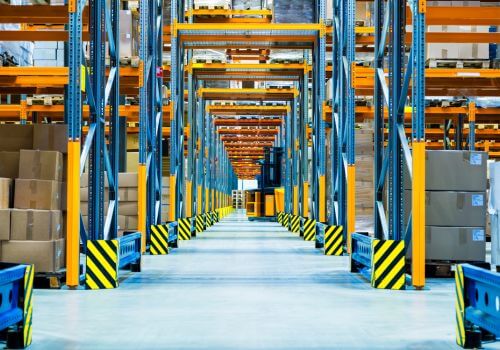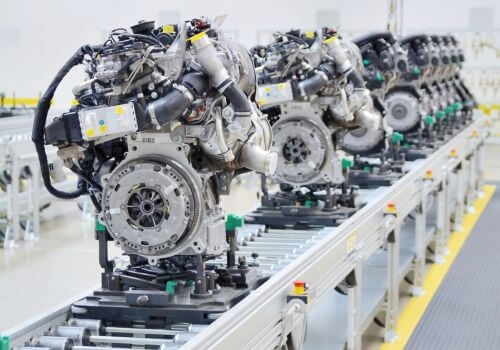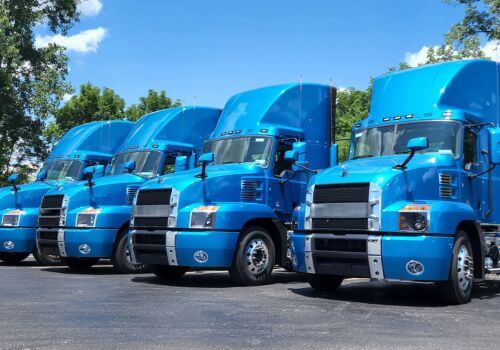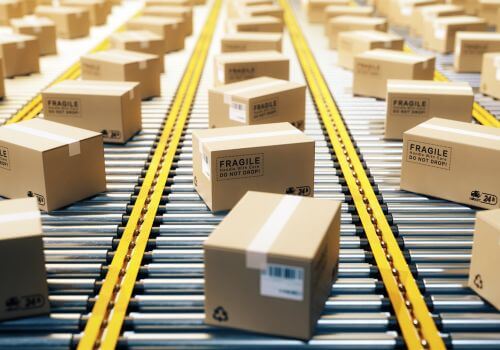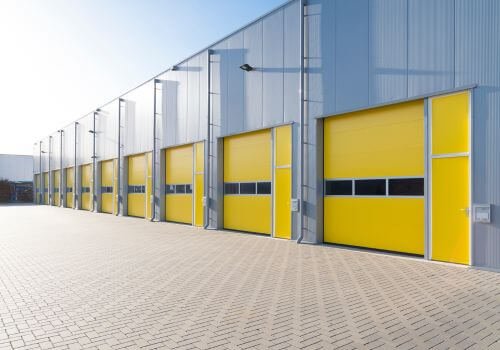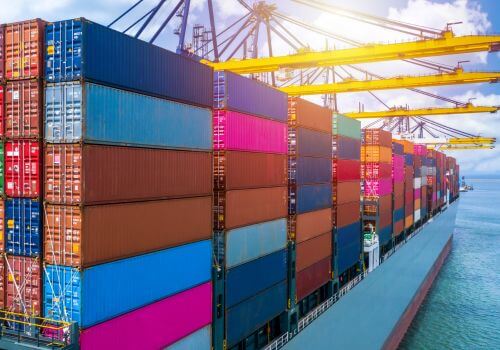What is Free Carrier (FCA) in logistics?
Free Carrier (FCA) is an international trade term that belongs to the Incoterms (International Commercial Terms) set by the International Chamber of Commerce (ICC). FCA defines the point at which the seller transfers responsibility for goods to the buyer or the buyer’s appointed carrier.
Under FCA terms, the seller is responsible for delivering the goods to a specified location, which can be the seller’s premises or another named place. Once the goods are delivered to this agreed-upon location and received by the buyer’s carrier, the risk and responsibility transfer from the seller to the buyer.
What are the key features of FCA?
FCA stands out among shipping terms with its unique characteristics that offer flexibility and precision in defining responsibilities between buyers and sellers.
- Flexibility in delivery location
- Clear division of responsibilities between buyer and seller
- Suitable for any mode of transport
- Risk transfer occurs when goods are handed over to the carrier
- Export clearance is the seller's responsibility
- Import clearance and duties are the buyer's responsibility
How does FCA work? (12 steps)
Understanding the FCA process is like navigating a well-choreographed dance of logistics, where each step is carefully coordinated and strategically executed.
1. Negotiation and agreement
The journey begins with the buyer and seller negotiating the terms of their transaction. They mutually agree to use FCA and specify the exact delivery location in their contract. This location could be the seller’s premises, a port, a freight forwarder’s warehouse, or any other agreed-upon place.
2. Preparation of goods
Once the agreement is in place, the seller starts preparing the goods for shipment. This involves:
- Proper packaging to ensure the goods can withstand handling and transportation
- Labeling according to international standards and buyer requirements
- Creating necessary documentation such as commercial invoices and packing lists
3. Export clearance
The seller takes on the responsibility of export clearance. This crucial step includes:
- Obtaining any required export licenses
- Filing export declarations with customs authorities
- Paying any export duties or taxes
- Ensuring compliance with all export regulations of the country of origin
4. Arranging pre-carriage
If the agreed delivery point is not at the seller’s premises, the seller arranges and pays for the transportation of goods to the specified location. This could involve trucking goods to a port or moving them to a freight forwarder’s facility.
5. Notification to buyer
The seller informs the buyer when the goods are ready for collection. This allows the buyer to make necessary arrangements with their chosen carrier or freight forwarder.
6. Delivery to agreed location
The seller delivers the goods to the agreed location at the specified time. This could mean:
- Having the goods ready for pickup at the seller’s facility
- Delivering the goods to a named port or terminal
- Handing over the goods at a freight forwarder’s warehouse
7. Handover to buyer's carrier
At the agreed location, the seller hands over the goods to the carrier nominated by the buyer. This is a critical moment as it marks the transfer of risk from seller to buyer.
8. Proof of delivery
The seller obtains proof that the goods have been delivered to the buyer’s carrier. This could be in the form of a carrier’s receipt or a warehouse receipt. This document is crucial for the seller as evidence that they have fulfilled their obligations under the FCA terms.
9. Main carriage arrangement
From this point, the buyer takes over. They are responsible for arranging and paying for the main carriage of the goods to their final destination. This could involve:
- Booking ocean freight for sea shipments
- Arranging air cargo for faster deliveries
- Organizing road or rail transport for land-based movement
10. Insurance coverage
The buyer is responsible for insuring the goods from the point of risk transfer. They need to arrange appropriate insurance coverage to protect against potential loss or damage during transit.
11. Import clearance and duties
As the goods approach their destination, the buyer handles all import-related tasks, including:
- Filing import declarations
- Paying import duties and taxes
- Arranging for any necessary inspections
- Ensuring compliance with import regulations of the destination country
12. Final delivery
The buyer arranges for the final delivery of the goods from the port or terminal to their desired location, which could be their own warehouse or a customer’s address.
What are the advantages of using FCA?
FCA offers a compelling array of benefits that make it an attractive option for businesses seeking efficient and transparent international shipping solutions.
- Flexibility: FCA can be used with any mode of transport, making it versatile for various shipping scenarios.
- Clear responsibilities: It provides a clear delineation of responsibilities between the buyer and seller, reducing potential disputes.
- Cost control for buyers: Buyers have more control over transportation costs as they arrange and pay for the main carriage.
- Reduced risk for sellers: Sellers' risk ends earlier in the shipping process compared to some other Incoterms.
- Suitable for container shipments: FCA works well for containerized cargo, which is increasingly common in international trade.
- Earlier transfer of costs: The buyer assumes costs earlier, which can be advantageous for sellers in terms of cash flow.
How does FCA compare to other Incoterms?
To better understand FCA, it’s helpful to compare it with other commonly used Incoterms.
FCA vs. EXW (Ex Works)
- In EXW, the seller’s responsibility ends at their premises.
- In FCA, the seller delivers to an agreed location and handles export clearance.
FCA vs. FOB (Free on Board)
- FOB is used only for sea and inland waterway transport.
- FCA can be used for any mode of transport.
- In FOB, risk transfers when goods are on board the vessel; in FCA, it’s when goods are handed to the carrier.
FCA vs. CIF (Cost, Insurance, and Freight)
- In CIF, the seller arranges and pays for main carriage and insurance.
- In FCA, the buyer handles these aspects.
4 examples of FCA transactions in the logistics sector
The following examples illustrate how FCA works across different industries and international trade scenarios, showcasing its flexibility and applicability to various modes of transport and types of goods.
1. Electronics export from South Korea
A South Korean electronics manufacturer sells products to a US-based retailer. Under FCA terms, the manufacturer delivers the goods to a specified carrier at Incheon International Airport. Once the carrier receives the goods, the responsibility and risk transfer to the US retailer, who then arranges for the main carriage to the United States.
2. Furniture shipment from Poland
A Polish furniture maker exports items to a UK-based distributor. The Polish company delivers the furniture to a freight forwarder’s warehouse in Warsaw, as agreed upon in the FCA contract. At this point, the UK distributor assumes responsibility for the shipment’s further transportation and associated costs.
3. Agricultural goods from Argentina
An Argentinian farm cooperative exports grains to a European food processor. Under FCA terms, the cooperative delivers the goods to a specified carrier at the Port of Buenos Aires. Once the carrier takes possession of the goods, the European buyer becomes responsible for the main carriage and subsequent logistics.
4. US-UK transaction
A US-based seller named Trent ships orders to a UK-based buyer named Bryan. As per FCA terms, Bryan must commission a carrier to collect the goods from Trent’s premises or another agreed-upon location in the US. Trent’s responsibility ends once the goods are handed over to Bryan’s nominated carrier.
In summary, Free Carrier (FCA) is an international trade term where the seller delivers goods to a specified location or carrier, transferring risk and responsibility to the buyer at that point, applicable to any mode of transportation.

